A beef and sheep farmer from Co Galway contacted the Irish Farmers Journal to raise awareness about a potential safety risk he encountered last week when agitating slurry. Sean Moran from Curraghmore, Kilkerrin, agitated a three-bay slatted shed on a Thursday.
There was plenty of spare capacity in the tank and the slurry was thicker than desired, so a decision was taken to delay spreading with rain forecast in the following days to allow roof water to be diverted to the tank to dilute the slurry.
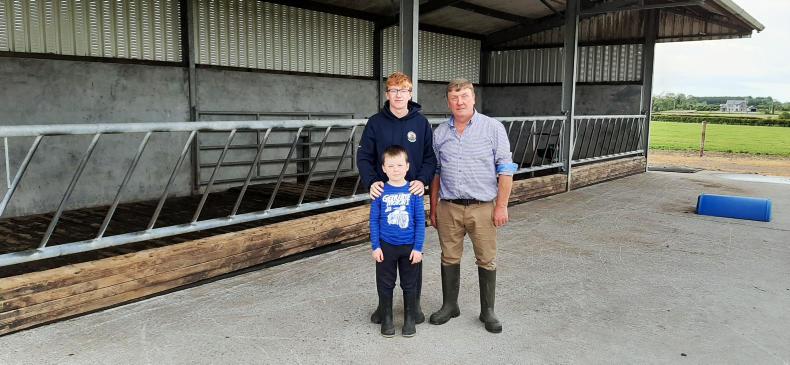
Sean Moran with his son Cathal and grandson Aidan ouside the slatted shed where the incident with slurry frothing occured.
The volume of rainfall received was small and on the following Tuesday morning when Sean entered the yard where the shed is located, he found that there was slurry foaming up through the slats and through two manhole covers at both ends of the shed.
The reaction taking place in the tank was at such intensity that it raised several gang slats away from the tank with some rising as much as 10 to 12 inches above the tank at one end.
Thankfully, activity in the tank subsided gradually in recent days and the majority of slats lowered back down on top of the tank without any slats failing to sit on the tank wall and falling into the tank.

This creep gate at the end of the slatted shed allows calves access to an adjacent dry-bedded shed.
It is unlikely that all slats will settle back evenly on the tank walls with dried slurry preventing this. Some slats which were lifted are currently sitting about an inch over the tank wall and will need to be eventually lifted off the tank to allow cleaning to take place and also to inspect the slats for any damage from the upward pressure applied.
Delayed spreading
Sean has also delayed emptying the tank until whatever reaction taking place in the slurry ceases.
He remembered similar instances being reported a few years ago where methane-producing bacteria were the root of the problem and presented a significant safety risk of explosions where methane could ignite.
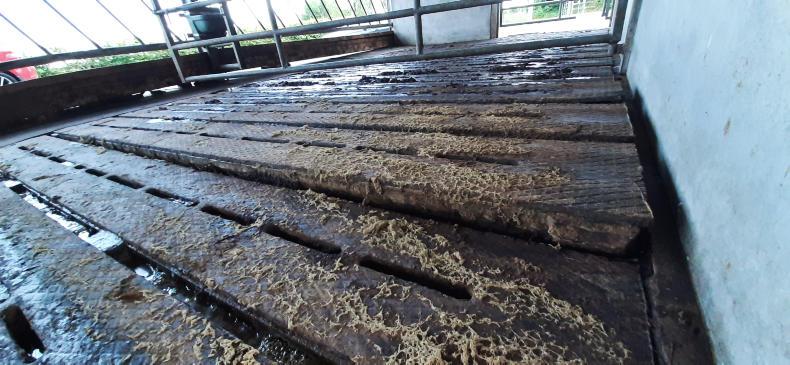
The majority of gang slats with the exception of the one pictured have lowered back into place as microbial activity has reduced.
“The shed was built in 2007 under Department of Agriculture approval and there was never any sign of any issues. It was something we had never seen and we wanted to be on the safe side, so we kept a good eye on it but steered well clear from trying to remove any slurry.
“The damage was done at that stage with slats lifted so there was no merit in any case in interfering with it. There has also been too many accidents and near misses with slurry gas and there is no point in asking for trouble – yes, it is extra hassle but slats can be mended and put back in place.”
Microbial activity
Sean, who has previously served as secretary of Galway IFA, says the recent increase in farm accidents prompted him to contact the Irish Farmers Journal. “We all have a role to play in reducing farm accidents. Hopefully someone reading this might remember it if they are ever faced with a similar situation.”
There has also been too many accidents and near misses with slurry gas and there is no point in asking for trouble
There were numerous reports in 2014 and again in 2018 of similar activity in slatted tanks. At the time, Teagasc highlighted that frothing of slurry due to vigorous microbial activity had been reported in a high number of cases.
The cause was identified as warm conditions providing the ideal environment for methane-producing bacteria to thrive. This is a common occurrence in countries with a warmer climate and is seldom seen in Ireland.
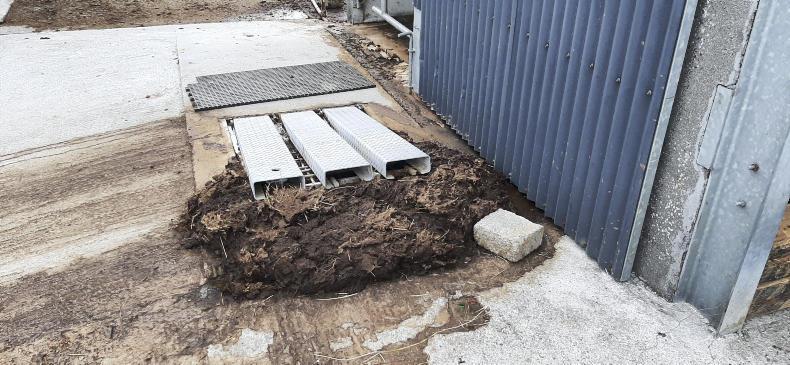
Microbial activity also pushed slurry upwards through two manhole covers at either end of the shed.
The cases reported in 2014 included two fires. One was where repair work was being carried out on barriers in a shed where slurry had been bubbling away and frothing at a slow rate at the level of the top of the slats for quite some time. A spark from the welder resulted in an ignition and flames rising up to 6ft high for a minute or so with slat mats also catching fire. A similar explosion was also reported to the Irish Farmers Journal at the time where an angle grinder was being used in a shed.
Farmers are taking advantage of recent rainfall and the harvesting of first-cut silage to get slurry spread.
With warmer temperatures forecast, there is a warning to heed safety advice and never enter sheds when they are being agitated.
Manhole lid covers should be closed when not in use and tractors should be securely parked to reduce the risk of tractors rolling and people getting caught in trap zones. Children should also not be allowed in the yard when slurry spreading is taking place. Another high-risk category is dogs in the vicinity of open tanks with numerous reports each year of health and safety risks in saving dogs which have fallen into tanks.
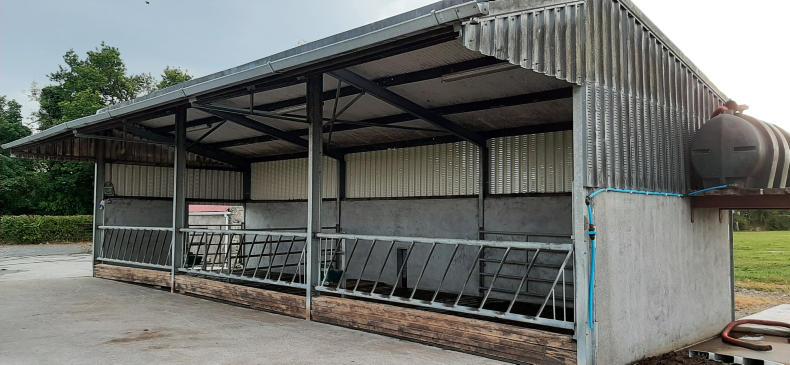
The three-bay slatted shed was originally constructed as a beef shed but has since been utilised to house cows and calves.
How it works: Sean Moran’s three-bay shed works well with an adjoining cow byre which has been converted to a loose house. Calves can access this via a creep gate at the end of the shed or via two doors at the back of the shed. This allows the shed to double up as a beef or suckler shed without the need for a creep area. It helps to break the bond between the cow and calf and gets calves to grass in spring when ground conditions prevent the turnout of cows.
Read more
Explosion in cattle shed after frothing ignited by welder
Slurry foams up through slats after agitation


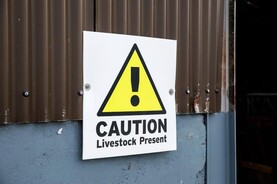


SHARING OPTIONS: